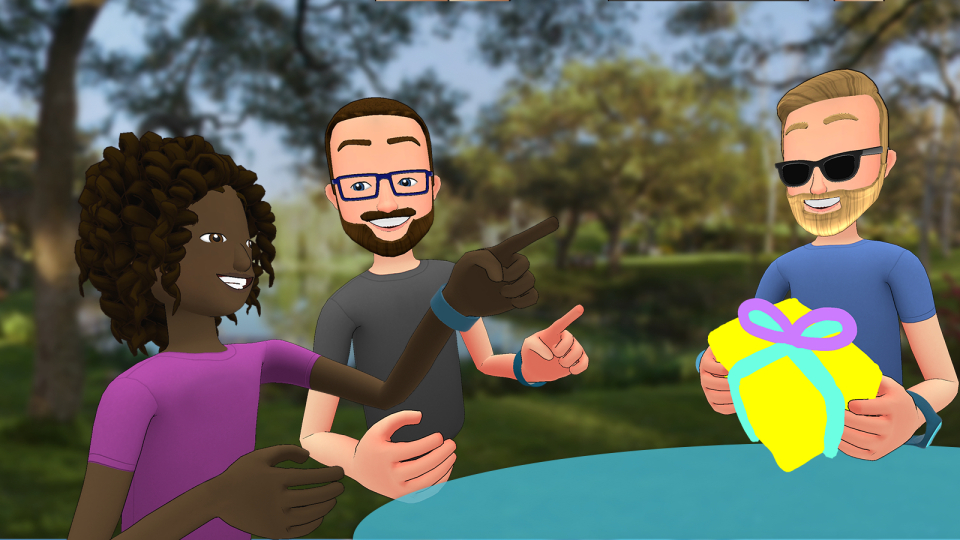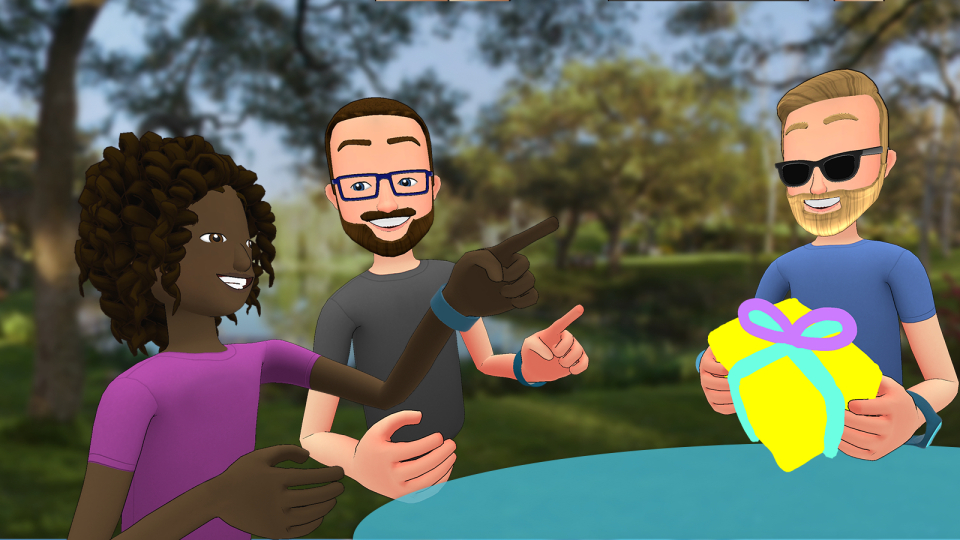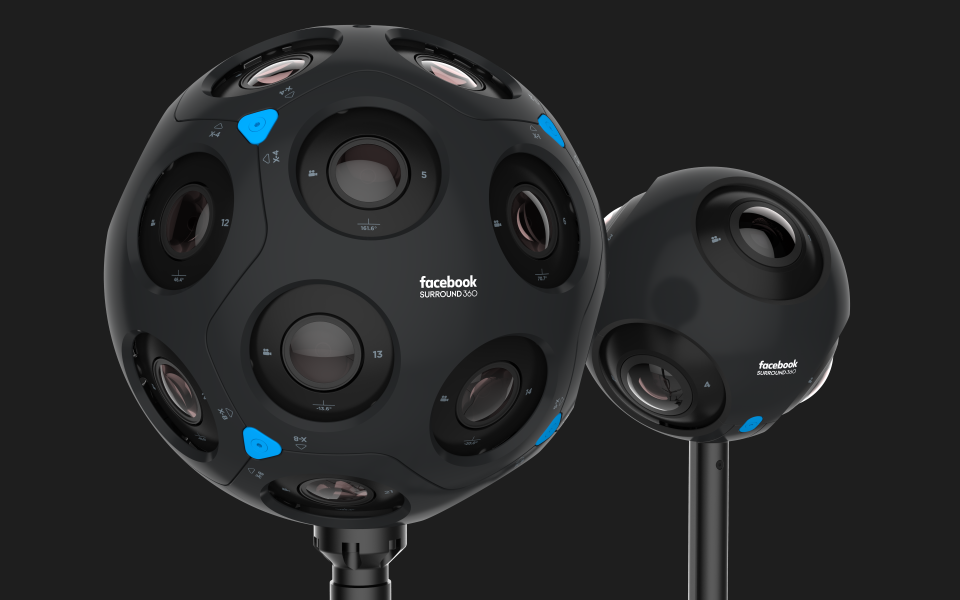At the 2017 F8 Conference, Facebook announced major investments in augmented reality (AR) for phone devices and Facebook Spaces, a new social virtual reality (VR) experience. 

Facebook Spaces, a new social VR experience - Credit: Facebook
Of course, it is not new for Facebook to show interest in extended reality (XR) experiences. In 2014, Facebook acquired Oculus, which has developed some of the most advanced VR devices to date. At $2 billion, this was a huge investment for the company.
Today, we will focus on AR and Facebook’s plan in this space. But first let’s talk about different types of experience with VR, AR, and mixed reality technologies.
VIRTUAL, AUGMENTED OR MIXED?
There’s often some confusion about the diverse types of experiences that are currently available. When we engage with customers interested in this technology, a major part of our first meeting is often spent talking about their requirements, and the experience and device they should choose for it. For example, in one of the demos we use with customers, we show a 3D model of a chemical plant that we first render in small size, so that we can see it as if we were 100 feet tall. In this scenario, we explain that the HoloLens is a collaborative device, and that we could easily have two, three or more devices, all connected, so all the users can watch the same scene and interact with it.
The “wow” part happens when we scale the plant up until we can walk inside it. This scenario, strictly speaking, is suited for a VR device, where the reality is built from scratch and the “real world” is invisible and does not interfere with the user’s perception of the plant. However, we choose to run this demo on HoloLens for multiple reasons. First, it is difficult to walk around when you are wearing a VR headset, which completely occludes your perception of the world. People often stumble even when there is no obstacle on their path. Then, there is the collaborative aspect. In VR, if you want to see someone else in the scene with you, the developer needs to render them as avatars. This is complex, and even today does not look completely real. This creates an uncanny valley that distracts the user from the holograms he or she is looking at. Finally, seeing your own hands and other real objects provides advantages, such as taking notes, answering phone call, etc.
THE FACEBOOK ADVANTAGES
Running AR applications on phones is nothing new. For example, Nokia had an application years ago that allowed users to point their phones at a street and get information about local businesses and other points of interest. The phone used GPS, compass, and accelerometer to capture information about what the user was looking at and to add the corresponding, additional information on their screen. Or we all remember the Pokémon Go craze last year that got people stampeding in public parks to catch virtual creatures.
In the long-term, we expect to see this kind of experience running on wearable devices instead of a phone. Goggles are critical to creating a truly immersive experience. But until the hardware is ready, creating public-facing augmented reality on phones is a viable alternative. Everyone has a phone in their pocket, and most of these have all the sensors needed to augment the user’s reality, including the most important one: a camera. This is only one step on the path to a really immersive mobile experience that we all aim for.
Of course, Facebook has some major advantages over others:
Financial resources
Facebook has the financial resources to spend on these experiences. For example, the company has recently announced a second generation of its Surround 360 camera, which allows for the production of live scenes in 360 degrees for VR.

The new surround 360 cameras - Credit Facebook
Audience
Another advantage that Facebook has over other systems is the tremendous pool of potential users. Even though it is not as popular as it used to be, Facebook still has a large number of users who might someday be interested in becoming an AR user. Facebook has the potential of making this bleeding-edge technology acceptable for everyday users, just like it made it OK for people to check their mobile devices for news from friends from all over the world.
Talent
Facebook has the potential to attract many developers, given its financial resources and number of users.
Of course, like with every announcement, there are also some unanswered questions:
- How long will it take for Facebook to be ready? And are they at risk of getting beaten to the punch by another company, such as Apple which is supposedly investing a lot in augmented reality, (although we have no indications about what they are building so far).
- Is Facebook going to be able to hold up to the generated excitement?
- What will the development environment be? Right now, it seems that Unity is the most widely-used environment for VR and AR, but there are also other contenders. Will Facebook make it easy for most developers by using a well-known solution, or will they roll up something different?
What about monetization?
Maybe the most important question for Facebook users is how this new experience will be monetized. Some of the examples that Facebook’s CEO and Co-founder Mark Zuckerberg mentioned include the possibility of leaving virtual notes for your friends and family in a room, or to augment a blank wall with virtual art. Let’s hope that announcers won’t start “augmenting” our virtual spaces with ads, but based on Facebook’s track record, it’s easy to think this might be the case. I hope Facebook will find a way to make this new space profitable without the annoyance.
All in all
It is exciting to see a large firms like Facebook investing in making these amazing technologies more popular to a large public. As we ponder what the future will bring, we can be sure the next few years to come will be quite interesting. So get ready to augment your reality with your phone soon.
